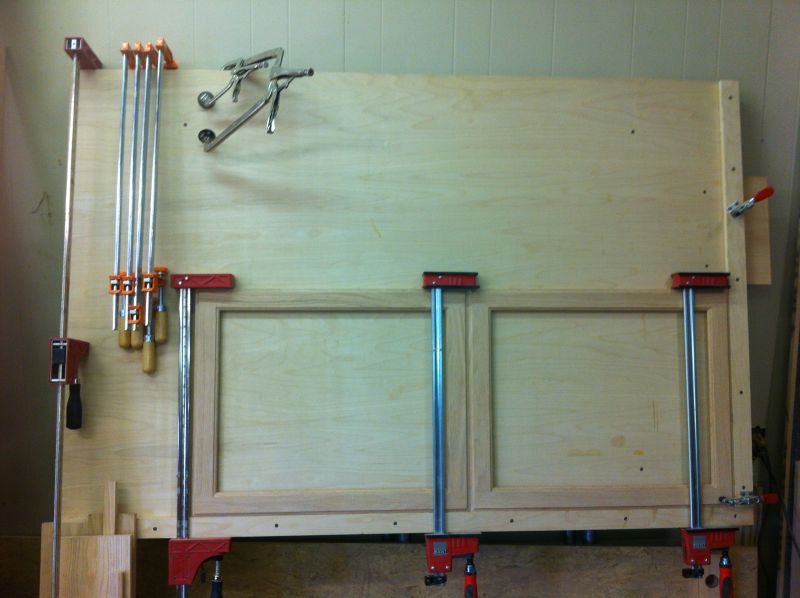Question
Over the years I have had some pretty bad episodes with lower back pain. I've been the sports-medicine route with ice therapy, anti-inflammatory drugs, etc., but the best I could do was reach a truce with it.
About three years ago I switched to an ergonomically designed office chair and, for the most part, the problem seemed to fix itself. Every now and then it would flare up but nothing like before.
The problem showed up again recently and, after struggling with it for a couple of days, I remembered that keeping my shoes tuned up helped a lot. (I work on concrete floors and wear a Rockport shoe with double soles - like a nurse's shoe).
I sent my daughter up to JC Penney's to get another pair of the Rockports (they have my size on file) and except for the fact that they didn't have the right color, the problem immediately went away. I'm bringing this up because back pain is something that shows up a lot in this industry and changing my shoes is something that seems to work for me.
Forum Responses
(Cabinetmaking Forum)
From contributor J:
I totally agree with your comments about shoes. I work on the same concrete floor and shoes seem to make a big difference. Right now, I'm using some Merrell trail runners but have had pretty good luck with cross-trainers and trail running shoes (New Balance). Both seem to provide good support and cushion.
Here are a few things that help... A forklift. Hands down the best work shoes are Rossi or Blunder stone. Australian work boots. 2 years ago we put a wood floor in the shop. Wish I had done that 20 years ago. The best thing I have done for my back is swimming 3 times a week.
I've had back problems since I was 15 related to a minor surgery. When I was renting space it had concrete floors (felt like a cripple). I placed the $20 rubber mats in front of every machine and all the way around my work bench. My new shop has wood floors (no more mats). I started wearing Blundstone work boots (Aussie like the Rossi). They finally started to import them for under $100. Since leaving the concrete I wear the $100 walking shoes from EMS.
My wife watched me work for awhile in the shop. She immediately had me change the height of all of my work benches (6'2" height), which were about 34". The one that really kills me is sanding. Now I have a couple of stands/sheet of plywood that raises the top of the bench up to about 40-42".
Exercise/stretching is the key. I used to ride 2000-3000 miles a year before kids. The elliptical helps in the winter. I do not have the patience for yoga. However doing 10 minutes of the "sun salutation" upon waking makes a hell of a difference all day long. It's a quick series of 5 poses that you repeat 6 times.
Most back pain is referred, meaning the location of the pain is usually not the problem. Men tend to get very stiff upper backs. We use our hands/arms/chest all day long. That makes your upper back stiff. That makes your neck and lower back sore.
Pronation is effectively flat feet. If you have flat feet do not waste your time and money on orthopedics. Go to your local good bike store. Specialized Bikes sells shoe inserts that have minor wedges that help to correct your flat feet in the correct manner versus the old school orthodics. The inserts cost $50 a pair. I have worn them every day for about 3 years. My wife prescribes a simple wedge insert ($50) to her patients.
The key to chairs is not to use them. Set up your computer on a drafting table or high table with a stool. Learn to use you back instead of collapsing into a "magical" chair.
I know that you are a systems thinker. You need to think of your employees as well. They are far more impacted by the concrete floors than yourself. You should provide them with rubber mats at all work stations/benches.
But the most important thing is stretching - take a 3 minute break each half hour and stretch. Get a cordless phone with a headset, and you can do your stretching while you're on hold, or talking to a customer that you can't hang up on. BTW - the importance of stretching is directly proportional to age ;)
I also use rubber mats, but there's a big difference between mats. I use the ones you'll find in restaurants and bars. They're very expensive to buy new, but they don't slip. They also come with optional tapered edges which the ones in front of my tablesaws have. I was lucky enough to find mine secondhand and I think I paid something like $25 a piece. I think of them the same way I think of machinery - if you want something that works well and is going to last, you need to spend a little more. Mine work very well and I wouldn't give them up for anything.
Now while we're on the topic... anyone have a good solution for a herniated disc?
Good shoes and mats in the shop help as well, but exercise and stretching will get rid of the pain.
